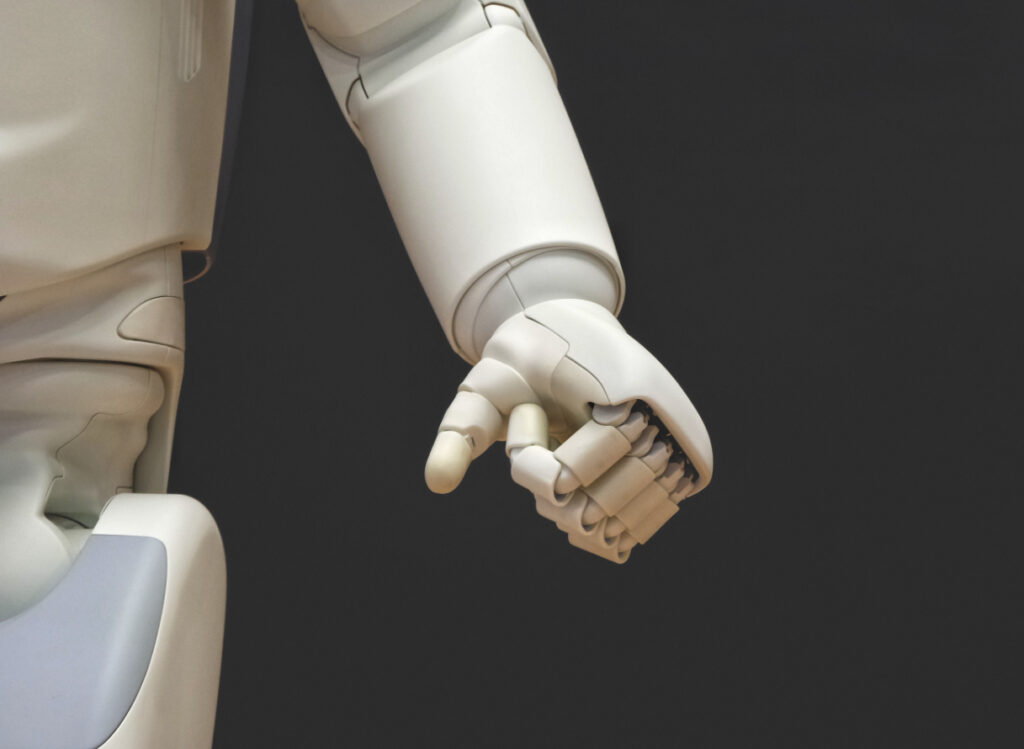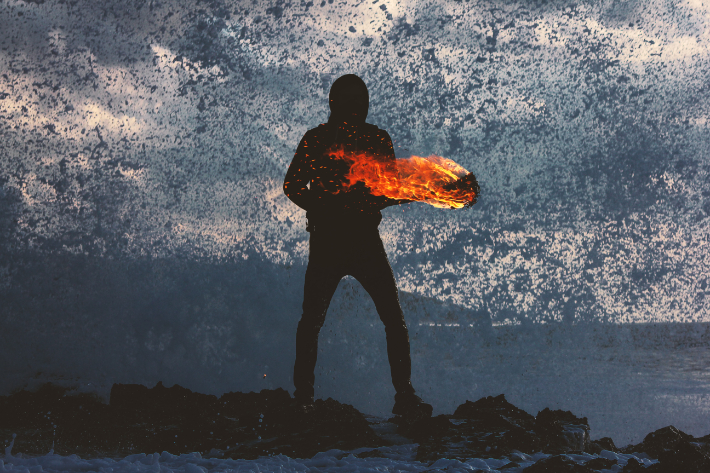Looking to include some juicy external conflict in your story? Conflict is the essence of a story, the struggle between opposing forces is at the heart of literature. Conflict is often analyzed as coming in two forms, internal and external. In this article, we will focus on external conflict. But if you want to learn how to improve your character’s internal struggle, check out this article on inner conflict.
It is important to note that there are often differing accounts on how many types of external conflict there are. Arguments could be made that some types could be better grouped rather than separate. The reason that I list 5 types is that I feel these five distinctions are valuable in evaluating and crafting conflict, but by all means, if you disagree I’d love to debate in the comments. Feel free to share your thoughts on the 19 different types of conflict and how many you think there really are.
Without further ado let’s dig into the many outside forces that we can throw at our poor unsuspecting protagonists.
Person Vs. Person

This one is probably the most obvious. The classic battle between sentients. When a character is faced with another sentient being that serves as an opposing force, then we have person vs. person external conflict.
This kind of conflict can be the classic hero vs. villain, but it is often more interesting when the details are more nuanced. Perhaps they want the same end result, such as peace for their people, but they disagree on the means. This kind of character conflict can lead to really interesting scenes and interactions. Or perhaps they are both good people competing for the same prize. If your protagonist has to struggle with the idea of robbing others of the same opportunity that can provide some really great internal conflict.
A really big portion here, which honestly might even belong as its own category, is relationship conflict. When two people have a relationship, there is room for conflict.
One of the best ways to make person vs. person conflict interesting is to ensure that all parties involved have a clear motivation that is believable which we will dig into in our example.
Example of Person vs. Person
Any fans of Avatar the Last Airbender? For our example of person vs. person let’s think about Zuko and Aang. Our protagonist Aang wants to bring peace to the world, and Zuko wants to capture Aang to regain his honor. Zuko has been commanded to capture the Avatar (meaning Aang) and Aang can’t be doing much world-saving if he is captured by the baddies.
They are in conflict with one another. They not only fight, but they also have opposing viewpoints on what matters most. Their competing desires are not exact opposites, but dynamic and interesting in their own ways. Each character’s motivation is clear and believable, and it avoids the mustache-twirling evil trope to provide some really interesting problems for our main character.
Person Vs. Nature

The sky is falling! Ok. not really, but if it was then that would definitely be some person vs. nature conflict. Any time that your characters are facing the forces of nature then that is a different kind of literary conflict to person vs. person. Nature can be extremely destructive, but it isn’t personal. Nature is just doing its thing, and sometimes that means that characters’ lives are at stake.
A natural force might just be a difficult obstacle in a plot or this kind of struggle can be the main conflict of a story. Typically these stories are centered on survival. Characters are not often able to fight back against nature but must simply endure it. At times, characters may be able to kill a predator that is hunting them or find some way to stop the forces that are trying to kill them, but this can lead to a struggle against other forces such as the cold of winter.
Keep in mind that it is human nature to personify these things. In the character’s minds, they might believe that a storm is out to get them or that the ocean wants them dead. If your story does include supernatural forces that are capable of commanding the powers of nature, then you’ve actually got number 5 on this list instead.
Example of Person vs. Nature
There are tons of good examples here, Castaway, The Revenant, Sharknado, etc. But I think one great and famous example of this is The Martian by Andy Weir. Mars is constantly trying to kill that poor man Mark Watney. (Did you catch that personification?) This story hinges on a man’s struggle against the odds and against the elements on a foreign planet with no breathable atmosphere and no restaurants in sight.
Watney has to constantly find new ways to science himself out of trouble and overcome the massive external force that is Mars. What makes this story so riveting is the tricky ways that Watney finds to solve his problems and the twists and turns he has to navigate as he does so. He can’t beat Mars, can’t force the air to be breathable, but he can (hopefully) find a way to survive.

Our 84-page book planner and 111 day writing course.
Person Vs. Society

The oppressive power of the societal norm. This kind of outside force can provide one of the most pertinent and relatable conflicts in a story. This can be as simple as the nerdy kid deals with high school, or as deep as racial inequality, bigotry, and oppression. Nearly everyone doesn’t fit the norm in one way or another, and so these stories are often very relatable and evoke powerful emotions.
One of the biggest differences you face when dealing with this kind of conflict is a unique form of conflict resolution. This kind of conflict isn’t often something that can easily be resolved. High school will still be tough for some nerds and racism cannot be wished away. These conflicts are often dealt with over lifetimes.
The way that these conflicts are resolved is often with people making changes inward rather than outward. People can come to terms with their flawed perspective, but those who suffer from oppression aren’t often able to stop the oppression entirely. When tackling these topics, be sure to be very tactful and understanding, especially if writing about oppressed people who aren’t like you.
Example of Person vs. Society
A great example of a society conflict story is the movie Hidden Figures. These women were critical pieces to the space program but were oppressed because they were black women. This story proceeds to show that these women were incredible, stood up for themselves, and accomplished great things despite the many societal forces pushing back at them. These women help each other, and in key moments find ways to challenge the racism and misogyny that tried to keep them down.
What makes this story truly great, beyond the fact that it is a true story, is that these women weren’t saved by someone else, they paved their own paths and made their marks on the space program despite their challenges. Truly inspiring to everyone.
As mentioned above, this story doesn’t show that racism is solved–in fact, these women were certainly underpaid and underappreciated–no this story is about how they were able to overcome these circumstances and shine despite racism and misogyny.
Person Vs. Technology

I feel this one every time I have to deal with those self-checkout machines. Call me old-fashioned but man I hate those things. I nearly lose it every time they repeat “please put your item in the bagging area!” “I am working on it, Robot Karen! It’s a dang watermelon and the bagging area is full!
Anywho, putting my own vendetta against checkout machines aside, this conflict comes when your character is up against some kind of advanced technology. This conflict differs from person vs. person in the approach one has to take to resolve the conflict. The technology that one faces is often man-made, which typically leads to them finding some way of reprogramming it or overcoming it through our own use of technology. Sometimes it is as simple as flipping an off switch.
This one has its roots in the sci-fi oldies. Authors published in Pulp Era science fiction magazines such as Asimov, Heinlein, and many others liked to tell stories about the ways in which technology became the downfall of the human race.
These stories were often critiques of the modern era’s dependence on technology and came with themes that support that critique. This is, of course, a gross overgeneralization. These authors wrote many stories about many things and their works explored many interesting and fascinating ideas. But if you’re looking for some inspiration on this one, the sci-fi classics are a good place to start.
Example of Person Vs. Technology
We’ve all been thinking it. The classic example here is our ol’ buddy HAL 9000 from one of those great sci-fi authors Arthur C. Clarke. You probably remember him best from 2001: A Space Odyssey. Our pal HAL has… a misunderstanding with astronauts Frank and Dave. They seem to want to turn him off over a little white lie and that just doesn’t seem fair to HAL.
HAL takes matters into his own hands, and reasons that perhaps simply killing the crew would allow him to fulfill his programming. HAL’s classic “I’m sorry Dave, I’m afraid I can’t do that.” has embedded itself deeply into pop culture. What makes this interesting, and so menacing is that Dave cannot reason with HAL in the same way that he could with a human.
This is both terrifying and fascinating. The idea that we need to adjust how we interact with something that controls our spaceship or has our lives in its hands is a very scary concept. That is why HAL has stuck with us for so long, and why he is the prime example for this kind of conflict.
Person Vs. Supernatural

This one doesn’t always make it on other lists and here is why. Arguably, supernatural conflict could be broken out into two parts, person vs. person and person vs nature. Here is why: if you are fighting Poseidon, god of the seas, then one could argue that the conflict is between two sentient beings (not a machine) and therefore this category shouldn’t exist. The other portion is, suppose someone has been cursed to be a werewolf, one could argue that being a werewolf is a conflict between a person and the nature of their world. Just as a disease is natural in our world, the curse of werewolfery is natural in another.
Here is why I think that this category belongs separately on this list: because if you are writing a fantasy story that includes these elements, you make the rules. You raise the stakes by creating an unequal playing field.
If you are dealing with a sentient supernatural force, you can choose how “human” they will be. Can they be reasoned with or not? Do they feel anything for people or not? If you are dealing with curses and spells that have no minds of their own but cause conflict for the character, then you can add some really interesting resolution requirements to those.
With person vs. supernatural, you essentially get to mix and match the parts that you want from the other categories on this list. You can manufacture magical outward roadblocks that trip up your character and you can decide what your character has to do in their efforts at conflict management. Fun!
Example of Person vs. Supernatural
Harry Potter provides some great Person vs. Supernatural conflict. One big one, one that Harry fears most, is the Dementors. They have their own rules, they act more like forces of nature than sentient beings but yet they hold a hauntingly human shape. These things can be fought off by the Patronus Charm. This is something that Harry has to learn, and something that creates some other great scenes because of the nature of the charm.
The Dementors provide a great source of conflict because they are brought into Harry’s life and become what he fears most. In this way, J.K. Rowling brought an internal conflict into the external world, literally forcing Harry to grapple with his fears and feelings of depression. Plus Dementors are just really really creepy which instantly adds tension to a scene, so that’s great as well!
Supernatural conflict is often used to exaggerate the internal conflicts that your protagonist is facing. This can make things really interesting as they are forced to acknowledge and deal with their inner struggles.
Other Factors to Consider

As a writer, you know there are many layers to conflict. Be sure to connect external conflicts throughout your manuscript. An important thing to include here is how your character interacts with their own self. by blending elements of internal conflict into each step of your narrative, that provides much more depth to the events going on around them. Mark Watney thinks primarily of his crew, Aang struggles with his responsibility and destiny as the Avatar. By adding some level of intense internal struggle you can really spice up your external conflicts.
Also as outlined in the 19 types of conflict, there are other ways to analyze conflict that can add some intrigue to your story. Consider how complex to conflict is, what the objective is and who the stakeholders are in the conflict. If the conflict is a task conflict it will differ from a value conflict. When mapping out your story, or analyzing your draft, consider how these factors might be tweaked to improve your narrative tension.
What has helped you the most when plotting out your conflicts? I’d love to hear about it in the comments.
Reed Smith
Reed is the founder and builder of Habit Writing and enjoys all things writing. He loves learning about the craft of storytelling, writing messy drafts, and playing board games with his wife, friends, and family.
Our 84-page book planner and 111 day writing course.
